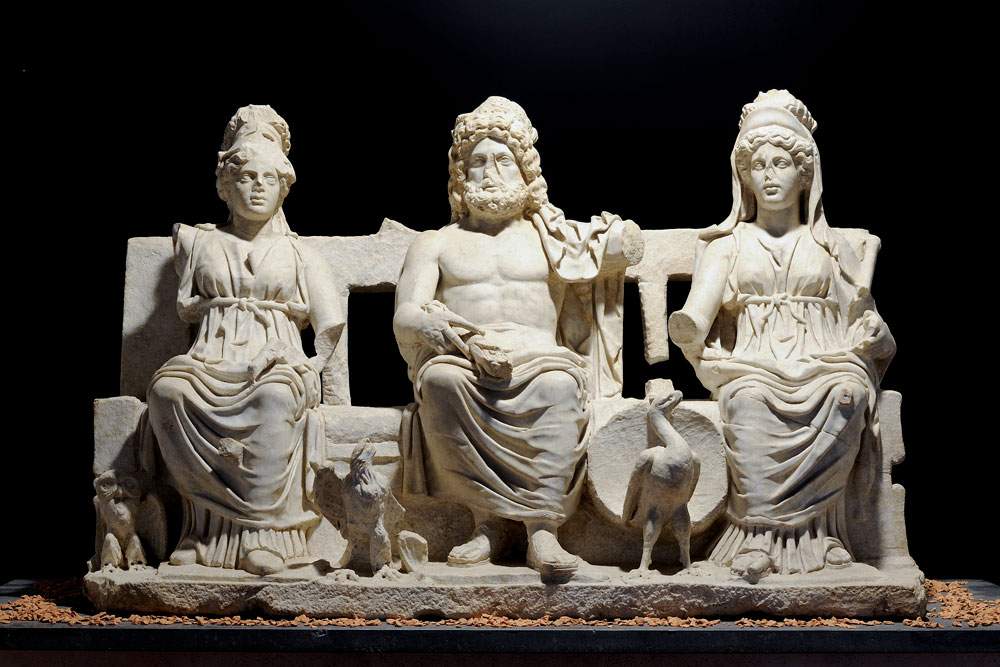At the Scuderie del Quirinale a major exhibition on the first unification of Italy under the sign of Rome
In Rome, at the Scuderie del Quirinale, the exhibition Tota Italia. At the Origins of a Nation, with more than four hundred artifacts to tell the story of the first great unification of the peninsula at the time of Augustus. Curated by Massimo Osanna and Stéphane Verger the major exhibition aims to narrate the process of Romanization starting from the rich cultural variety of pre-Roman Italy and retracing the stages that led to theunification under the sign of Rome, from the fourth century BC to the Julio-Claudian age. In its title, the exhibition takes up the famous formula of the oath of Augustus, the one who first reunified Italy not only politically and administratively, but also culturally, religiously and linguistically. A unification that nevertheless managed to preserve that division into regions that still testifies to the richness and variety of our traditions.
The exhibition itinerary presents the most significant works of that expressive variety: more than four hundred pieces, including statues, furnishings, and ceramics, that testify to the dialogue between Rome and the rest of Italy. The first part of the exhibition focuses on the variety of Italic peoples before the Roman unification, while the second part focuses on warfare, documented through iconic objects or large figured friezes, starting from the Roman unification after the Punic Wars to the age of Augustus.
The exhibits come from as many as thirty-six locations, including state and civilian museums and superintendencies. Exhibits of great historical value are gathered here, such as the Throne decorated in relief from the Barberini Corsini National Galleries in Rome, the Portrait of Augustus with Veiled Head from the National Archaeological Museum of the Marches, and the Bust of Octavia Minor from the National Roman Museum-Palazzo Massimo alle Terme; iconic grave goods such as the Dowry of the “Tomb of the Two Warriors,” kept at the Melfese Archaeological Museum “Massimo Pallottino,” and the Dowry of a female tomb from the necropolis of Montefortino d’Arcevia and kept at the National Archaeological Museum of the Marches. There is also the Cista jewel case with an archaic Latin inscription from the National Etruscan Museum of Villa Giulia in Rome, the Sostegno di mensa with two griffins attacking a fawn from the Museo Civico di Ascoli Satriano to the famous Rilievo with a battle scene between a Greek knight and a Persian kept at the National Archaeological Museum in Taranto.
“Through a selection of works of exceptional relevance preserved in the main Italian museums,” said Massimo Osanna, curator of the exhibition and director general of Museums of the Ministry of Culture, "with the exhibition Tota Italia . At the Origins of a Nation was intended to propose a reflection on that long and grandiose process of cultural, linguistic and legal unification and transformation of economic, social and territorial arrangements that, under the impetus of Rome, led the various populations of ancient Italy to recognize themselves in one great common entity. In the first part of the exhibition, some of the most representative archaeological evidence of the cultures peculiar to the Italic peoples illustrates the great variety of ways of living and expressing oneself, of building and dwelling, of honoring the dead and worshipping deities spread throughout the Peninsula before so-called Romanization. As the exhibition continues, the marked differences between peoples tend to gradually fade and the common and distinctive features of that Tota Italia that, after the Social War and, definitively, in the time of Augustus, recognized itself as a unique nation and the center of the Mediterranean world, emerge strongly.“ ”A choral exhibition,“ Osanna continued, ”in which works from so many Italian museums tell the story of an extraordinary cultural richness that has its roots in the earliest Italy and in the first, great Augustan unification of the Peninsula, and that still deeply permeates today’s Italy through the many legacies of Rome in culture, language, law, but also in regional boundaries, the layout of roads, cities and rural landscapes."
"With Tota Italia," added Minister Dario Franceschini, “culture restarts at the Scuderie del Quirinale with an introspective look, capable of investigating, through our heritage, the deepest roots of our identity. The close synergy between one of the most prestigious exhibition venues in the country and the Ministry of Culture has in fact made it possible to set up in a short time an exhibition of great scientific and cultural depth, which traces the progressive fusion of the different Italic populations into a single nation in the sign of Rome.”
The Scuderie del Quirinale presents on its social channels, on the occasion of the opening of the exhibition, a series of appointments related to the in-depth study of the exhibition with focus and other curiosities on the origins of the ideal of a united Italic nation.
Hours: Monday through Sunday from 10 a.m. to 8 p.m. Admission is allowed to 15 visitors every five minutes. On Saturdays and Sundays, reservations are required and must be made by the day before the visit at scuderiequirinale.it, vivaticket.com or Vivaticket outlets.
Image: Capitoline Triad (2nd century AD; Guidonia Montecelio, “Rodolfo Lanciani” Civic Archaeological Museum). Courtesy of the Municipality of Guidonia Montecelio, by concession of the Soprintendenza Archeologia, Belle Arti e Paesaggio for the Metropolitan Area of Rome and the Province of Rieti. Photo by Giovanni Coccia
 |
| At the Scuderie del Quirinale a major exhibition on the first unification of Italy under the sign of Rome |
Warning: the translation into English of the original Italian article was created using automatic tools. We undertake to review all articles, but we do not guarantee the total absence of inaccuracies in the translation due to the program. You can find the original by clicking on the ITA button. If you find any mistake,please contact us.



























